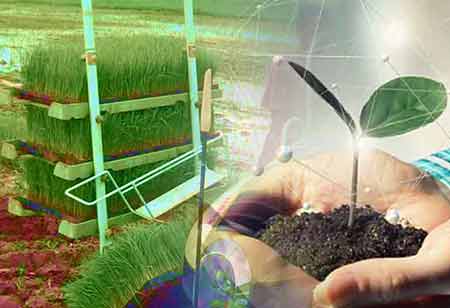Thank you for Subscribing to Agri Business Review Weekly Brief
Water-Holding Soil Helps Farmers Deal With Rising Temperatures
Rises in average temperatures contribute to declines in soil moisture, impacting crop production and degrading soil in the long term.

By
Agri Business Review | Thursday, August 04, 2022
Stay ahead of the industry with exclusive feature stories on the top companies, expert insights and the latest news delivered straight to your inbox. Subscribe today.
A new study suggests that soil's capacity for holding water will be key to deciding how nicely farms in some regions of the US manage extended heat stress because of climate change.
FREMONT, CA: A soil study suggests that the capacity for holding water will determine how well farms manage lengthened heat stress due to climate change.
Rises in average temperatures contribute to declines in soil moisture, impacting crop production and degrading soil in the long term.
Researchers say adding more amendments to improve the water-holding capacity of the land and using more mulch to reduce evaporation could help farmers reduce heat stress on their crops.
Simultaneously that farmers are facing more extreme weather events due to climate change. They are handling the growing issue of soil degradation, first author of the study and assistant professor at Emory University's environmental sciences department.
Seven hundred fifty million people were undernourished in 2019 because of the effects of climate change, comprising a decline in food production, hikes in food prices, and growing competition for land and water.
And the issue of global food security is expected to intensify. For example, world crop yields are projected to decrease by 25% within the next 25 years because of climate change, yet global food production would need to double by 2050 to feed the projected growth in the human population.
Healthy soil
Keeping the soil healthy is essential to adapting to the climate crisis. Healthy soil contains microbes that give the nutrients necessary for healthy plants to grow, she explains, while helping make the plant foods we eat more nutritious.
These microbes' presence also improves the soil's ability to sequester carbon. As a result, the top 30 centimeters (roughly 1 foot) of the world's soil contains about twice as much carbon as the total atmosphere, making soil the second-largest natural carbon sink after oceans, as per the United Nations' Food and Agriculture Organization.
The rise in average temperatures still contributes to declines in soil moisture in some areas, which can influence crop production while also debasing the soil over the long term.
The water-holding capacity of soil
For the present paper, the researchers sought to quantify the long-term influence of climate and soil properties on corn, soybeans, cotton, and wheat production across the mainland US. They drew county-level data from the US Department of Agriculture from 1981 to 2015. Their dataset included precipitation rates and accumulated average everyday temperatures over a crop's growing season, named growing-degree days. The data also featured soil variations, comprising retention capability, organic matter texture (the percentage of sand, silt, and clay), slope, erodibility, Ph, and soil-loss tolerance.
The researchers employed an explainable machine-learning approach to evaluate the impact on crop yields of these climate and soil variables. The outcomes singled out growing-degree days as the most important climatic factor and water holding capacity as the most powerful soil property for crop-yield variability.
Check Out This : PROPTECH OUTLOOK
Clay soil & soil rich in organic material retain water better than sandy soil, she explains. Hence farms with sandy soil or soils containing less organic material may want to add more amendments to enhance the water-holding capacity of the land. Another likely adaptation is to use more mulch to decrease evaporation.
The researchers hope their findings will support farmers, land-management specialists, and policymakers in decision-making related to sustainable and long-term soil-, water-, and crop- management practices.





